Watering tips for your lawn / Lawns tips & watering
We cannot emphasise enough how important it is to water your lawn straight away, as soon as you have got it down. If you don’t water it your lawn will dry out and start turning brown and look very nasty. If you are doing a large area don’t wait until it is all finished, start watering once you have a few metres down, because that first hour in the sun is critical. Make sure you water methodically, thoroughly soaking every square metre before moving onto the next section.
Establishing your roots
The surface soil must be kept moist until the roots of the turf have established. To test later on, try to lift a corner of the turf, if it holds well it is established, if it comes away in your hand it needs more time. This is also the way to determine whether the lawn is established enough to be mown, this can take between 1 to 8 weeks depending on location and the time of year.The amount of water your lawn will need will depend on local conditions. A good idea is to leave a towel out on the lawn for the first few days, when the towel dries out, your lawn will immediately need more water, it is so critical for the first few days. Also move the towel around just so you don’t do any damage to the lawn.It is important that your lawn receives regular waterings and is prevented from drying out for the first 6 weeks or at least until it has been mown twice by which time it should be well established.
Remember less frequent deeper soakings are the way to go because that will encourage good strong deep roots, which is what every lawn owner should strive for.
If your lawn becomes slightly patchy 4 to 6 weeks after installation it is usually due to extreme weather or lack of correct watering during early establishment. There is not a lot you can do if this occurs, except give it some time and it will return to normal. Once it is established watering can be cut right back, Sir Walter lawns in most parts of Australia hardly need any regular watering to keep alive once established.
Except in really sandy locations such as Western Australia where weekly watering will be required.Don’t forget when it comes to watering always check and comply with any local water restrictions or better still if you haven’t done so already install a rain tank.
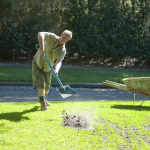 Applying a top dressing to your lawn is appropriate when it needs a boost of nutrients, is uneven or contains holes.
Applying a top dressing to your lawn is appropriate when it needs a boost of nutrients, is uneven or contains holes.
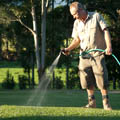 Sir Walter Premium Lawn Turf has been bred with drought tolerance in mind, giving you the most water efficient soft buffalo grass on the market. Learn how to give your ‘Sir Walter’ lawn the most efficient and effective watering …
Sir Walter Premium Lawn Turf has been bred with drought tolerance in mind, giving you the most water efficient soft buffalo grass on the market. Learn how to give your ‘Sir Walter’ lawn the most efficient and effective watering …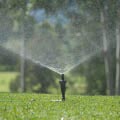 One thing all the experts agree on is that less frequent, deeper watering is the way to go, rather than regular shallow watering. The same theory applies to the plants in your garden.
One thing all the experts agree on is that less frequent, deeper watering is the way to go, rather than regular shallow watering. The same theory applies to the plants in your garden. 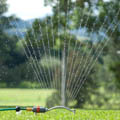 Your local water authority may be offering rebates on rainwater tanks.
Your local water authority may be offering rebates on rainwater tanks.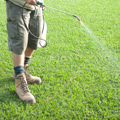 Winter is an excellent time to focus on getting any invaders under control whether they are weeds or pests. In the cooler months of June and July, warm season turf like Sir Walter fall into a dormant state, while broad leaf weeds continue to grow and become more obvious. This means that it is the perfect time to nip them in the bud (so to speak) by taking some serious action. By taking care of these pesky tasks now, you will have a greener lawn that will be ready to spring back into full health as soon as the warmer months hit.
Winter is an excellent time to focus on getting any invaders under control whether they are weeds or pests. In the cooler months of June and July, warm season turf like Sir Walter fall into a dormant state, while broad leaf weeds continue to grow and become more obvious. This means that it is the perfect time to nip them in the bud (so to speak) by taking some serious action. By taking care of these pesky tasks now, you will have a greener lawn that will be ready to spring back into full health as soon as the warmer months hit. At Sir Walter, we believe that prevention is always better than a cure, so we recommend that you keep Sir Walter healthy. Sir Walter turf has a natural weed resistance that will suffocate the growth of pesky weeds in its normal healthy state.
At Sir Walter, we believe that prevention is always better than a cure, so we recommend that you keep Sir Walter healthy. Sir Walter turf has a natural weed resistance that will suffocate the growth of pesky weeds in its normal healthy state.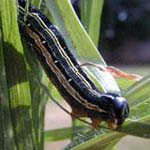 Army worm or sod web worm can be really bad news and can attack all sorts of lawns right across Australia. Sadly their favourite lawn is a healthy one.
Army worm or sod web worm can be really bad news and can attack all sorts of lawns right across Australia. Sadly their favourite lawn is a healthy one.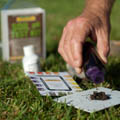 pH – ACID, NEUTRAL AND ALKALINE
pH – ACID, NEUTRAL AND ALKALINE The days are getting shorter and the temperature is getting a little cooler, but your lawn is still growing. Autumn is one of the most important times on the lawn care calender.
The days are getting shorter and the temperature is getting a little cooler, but your lawn is still growing. Autumn is one of the most important times on the lawn care calender. Maintain your healthy looking green lawn with Sir Walter this winter. Part of the philosophy, and indeed the name behind Sir Walter, comes from its ability to maintain its strength of colour and coverage throughout winter.
Maintain your healthy looking green lawn with Sir Walter this winter. Part of the philosophy, and indeed the name behind Sir Walter, comes from its ability to maintain its strength of colour and coverage throughout winter. The first rule of thumb to keep in mind when mowing your Sir Walter Soft Leaf Buffalo Lawn, is that mowing height matters!
The first rule of thumb to keep in mind when mowing your Sir Walter Soft Leaf Buffalo Lawn, is that mowing height matters!





